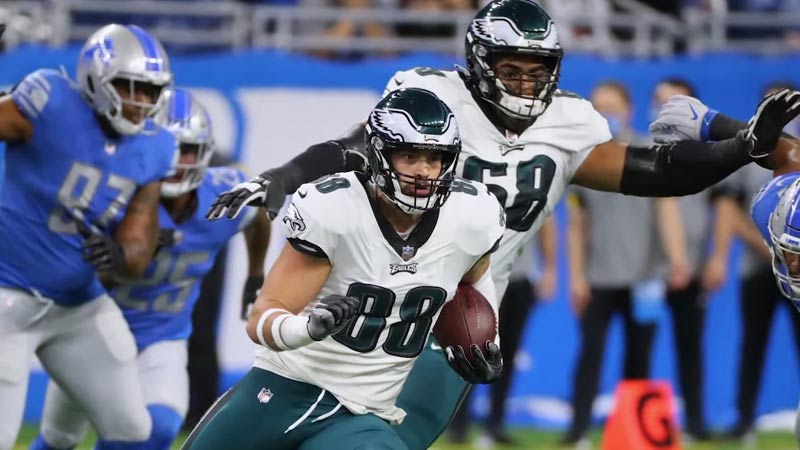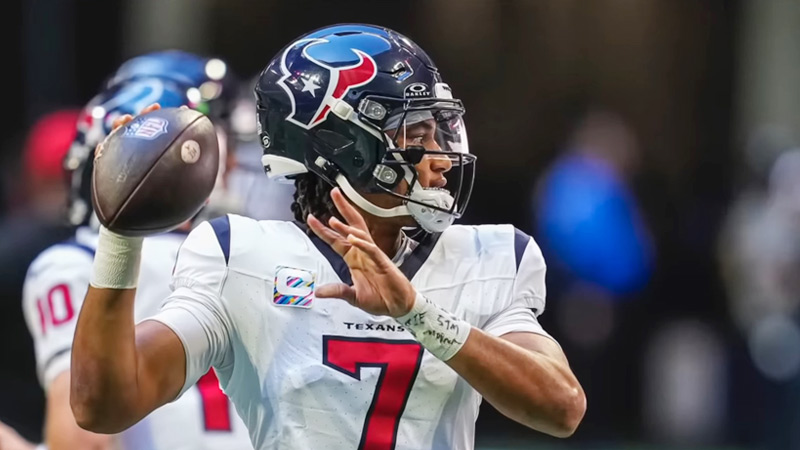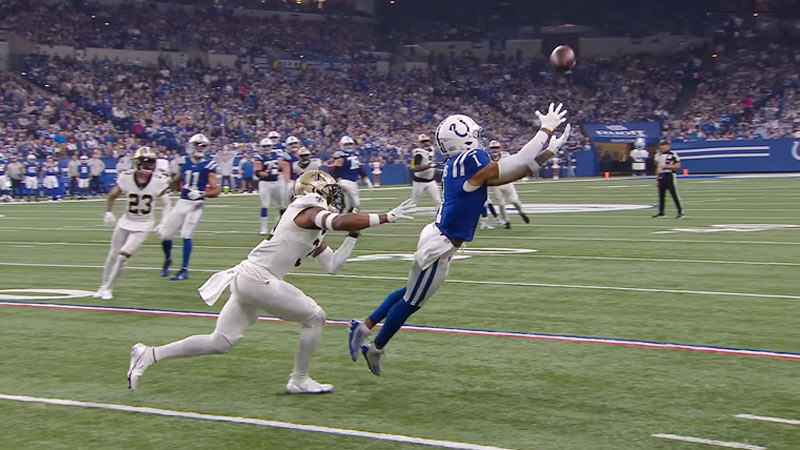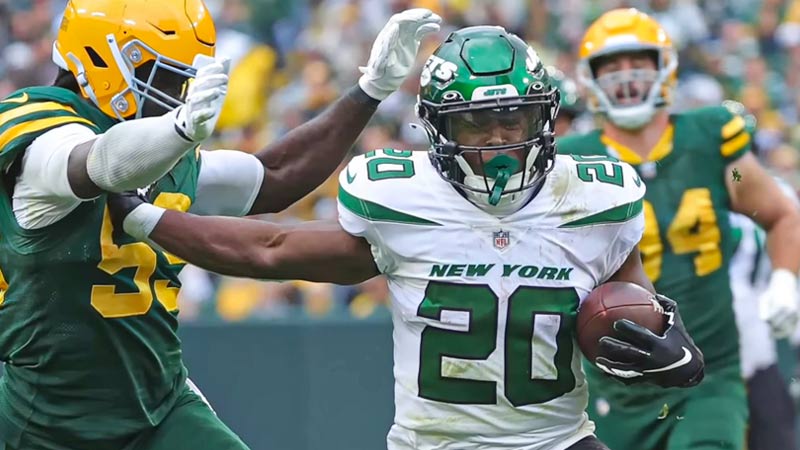Discover the intricate strategies and dynamic gameplay of the American Football West Coast Offense.
Pioneered by coaching legend Bill Walsh, this offensive system has reshaped the landscape of the sport. Focused on precision, timing, and adaptability, the West Coast Offense goes beyond traditional football norms.
This blog post delves into the core principles and key formations that define the West Coast Offense, from the quarterback’s strategic decision-making to the versatile roles of running backs and receivers.
Explore the challenges teams face in implementing this complex system and understand how it has become a cornerstone in modern football strategy.
Whether you’re a seasoned football enthusiast or a casual observer, unravel the layers of this iconic offensive approach that has left an indelible mark on the game. So, stay sharp.
Foundations of the American Football West Coast Offense
The West Coast Offense, pioneered by Bill Walsh in the 1980s, revolutionized American football strategy.
Focused on short, precise passes and ball control, it emphasized timing and rhythm over sheer power. Walsh’s philosophy aimed to stretch defenses horizontally, utilizing quick throws to open up opportunities downfield.
The offense prioritized a diverse set of receivers and running backs, requiring versatility from each player. Walsh’s strategic innovation led to unprecedented success, particularly with the San Francisco 49ers.
The West Coast Offense has since become a fundamental aspect of modern football, influencing countless teams and coaches, and remains a cornerstone in offensive playbooks across the league.
Key Components of the West Coast Offense
The West Coast Offense emphasizes short, high-percentage passes to exploit mismatches and create a rhythm.
Quarterbacks execute rapid, precise throws, often using three- and five-step drops, aiming for a quick release to keep the defense off balance.
Timing and Precision
The offense relies heavily on timing and precision between the quarterback and receivers.
Routes are designed to be run with precise steps, demanding a seamless connection between the passer and his targets. This timing-based approach aims to create open passing lanes and exploit defensive vulnerabilities.
Ball Distribution
One of the key principles is spreading the ball across multiple receivers and positions.
Running backs and tight ends are frequently incorporated into the passing game, requiring the quarterback to make decisions based on the best available option rather than relying solely on star receivers.
Horizontal Stretch
The West Coast Offense often stretches the defense horizontally, utilizing short passes to the sidelines and across the field.
This horizontal expansion creates space for receivers to gain yards after the catch and opens up opportunities for deeper passes as the defense adjusts to cover the entire field width.
Versatile Personnel
This offensive scheme demands versatility from players, requiring running backs and tight ends to be effective receivers.
The ability of all offensive positions to catch passes and contribute in various ways adds an element of unpredictability, making it challenging for defenses to anticipate play calls.
Play Action and Misdirection
The West Coast Offense frequently incorporates play-action passes, and misdirection plays to keep defenses guessing.
The offense can create openings for deeper passes and exploit overcommitting defenders by establishing a credible running threat.
Yards After Catch (YAC) Emphasis
A key feature is the emphasis on gaining significant yards after the catch.
Receivers are often targeted in positions where they can quickly turn upfield, using their agility and speed to create additional yardage beyond the initial reception.
Quarterback Mobility
Quarterbacks in the West Coast Offense must often move within the pocket or execute rollouts.
This mobility helps the quarterback extend plays, buy time for receivers to get open, and adds an extra dimension to the passing attack.
Adaptability to Personnel
The West Coast Offense is adaptable to different personnel and skill sets.
It can be tailored to fit the strengths of the quarterback and the available receiving talent, allowing teams to modify and evolve the system based on their roster composition.
Red Zone Efficiency
The West Coast Offense strongly emphasizes efficiency in the red zone (inside the opponent’s 20-yard line).
Short, controlled passes and well-timed plays become crucial in this area, aiming for higher touchdown conversion rates rather than relying solely on field goals.
WCO Formations in American Football
These formations are strategically designed to create mismatches, exploit defensive weaknesses, and maintain the offense’s adaptability. Here are key WCO formations:
Spread Formation

The spread formation aligns receivers wide across the field, stretching the defense horizontally. This formation creates one-on-one matchups and opens up passing lanes, allowing for quick, short throws to receivers in space.
It also forces defenders to cover a larger area, making it challenging to predict the direction of the play.
Trips Formation
Trips formation involves three receivers aligned closely on one side of the field. This setup can overwhelm the defense on that side, creating numerical advantages.
The isolated receiver on the opposite side often becomes a focal point, offering opportunities for quick throws or exploiting the defense’s shift toward the overloaded side.
Double Tight End Formation
Utilizing two tight ends, this formation provides both a strong passing threat and additional blocking support for the quarterback.
The double tight end set allows versatility, with the potential for short, quick passes to tight ends and the ability to establish a power running game.
I-Formation Variations
While the I-formation is traditionally associated with power running, WCO adaptations often incorporate variations with multiple receivers.
This adds a layer of unpredictability, as the defense must respect both the potential for a power run and the quick, short passing game that characterizes the West Coast Offense.
Shotgun Formation
The shotgun formation, with the quarterback positioned several yards behind the center, provides a clear view of the defense and extra time for decision-making.
It is a staple in the West Coast Offense, enabling the quarterback to quickly scan the field, make rapid decisions, and execute short, timed passes.
Players’ Role in West Coast Offense
In the West Coast Offense (WCO), players assume specific roles crucial to the system’s success. Each position, from quarterback to running back and receivers, contributes uniquely to the offense’s emphasis on short, precise passes, timing, and adaptability. Here are key player roles in the West Coast Offense:
Quarterback (QB)

The quarterback in the WCO serves as the orchestrator, requiring a strong arm, exceptional decision-making, and accuracy.
Quick reads, rapid progressions, and delivering short, timed passes are paramount.
Quarterbacks must also demonstrate mobility to extend plays and execute rollouts, adding an extra dimension to the offense.
Running Back (RB)
Running backs in the WCO are versatile contributors, expected to excel not only in traditional rushing but also as receiving threats.
Their ability to catch short passes out of the backfield and gain yards after the catch is crucial. This dual threat keeps defenses off balance and enhances the offense’s adaptability.
Wide Receivers (WR) and Tight Ends (TE)
Wide receivers and tight ends play pivotal roles in route running and creating separation from defenders.
Precise route execution is essential, as is the capability to gain yards after the catch.
The WCO values a diverse set of receivers, emphasizing spreading the ball across different targets to exploit mismatches and defensive vulnerabilities.
Offensive Line
The offensive line is fundamental to the success of the WCO, providing protection for the quarterback and creating lanes for running backs.
Given the focus on quick passes, linemen must excel in pass protection, maintaining a strong pocket for the quarterback to operate.
Additionally, their blocking is crucial in screenplays and maintaining the balance between the run and pass game.
Tight Ends (TE) and Fullbacks (FB)
Tight ends and fullbacks in the WCO contribute to the offense’s passing and running aspects. They are often used as additional blockers in the run game and as short to intermediate-receiving targets.
Their versatility allows the offense to seamlessly transition between power running and quick passing plays, keeping the defense guessing.
Challenges in American Football West Coast Offense

While the West Coast Offense (WCO) in American football has been highly successful, it has its challenges.
Coaches and players encounter specific obstacles as they implement and execute this intricate offensive system, requiring strategic solutions to maintain its effectiveness.
Here are key challenges in the American Football West Coast Offense:
Precision and Timing Demands
The West Coast Offense places a premium on precise timing between the quarterback and receivers. Achieving synchronization in route running and quick releases requires meticulous practice.
Defensive disruptions, such as well-timed blitzes or aggressive coverage, can throw off this timing, necessitating constant refinement of execution under varying game conditions.
Quarterback Skill Set Requirements
Successful implementation of the WCO demands a quarterback with a unique skill set—quick decision-making, accuracy on short and intermediate throws, and the ability to read defenses effectively.
Developing and maintaining a quarterback with these attributes can be challenging, and injuries or personnel changes may necessitate strategy adjustments.
Offensive Line Protection
Given the emphasis on quick passes, the offensive line must protect the quarterback effectively against aggressive pass rushes.
Maintaining a secure pocket is essential, and challenges arise when facing formidable defensive lines or when dealing with injuries to key offensive linemen, disrupting the rhythm and execution of the WCO.
Adaptability to Defensive Adjustments
Opposing defenses, once familiar with the WCO, often make adjustments to counter its short-passing emphasis.
Skilled defensive coordinators may deploy tactics such as press coverage, zone blitzes, or effective pass-rushing strategies to disrupt the offense’s rhythm.
Adapting the WCO to counter these defensive adjustments while maintaining its core principles poses an ongoing challenge.
Balancing Run and Pass
While the WCO is renowned for its passing efficiency, striking a balance between the passing and running game is crucial. Predictability can be a challenge, as defenses may exploit tendencies.
Coaches must work to integrate effective running plays to keep defenses honest, preventing them from solely focusing on disrupting the short-passing attack.
FAQs
How does the West Coast Offense differ from other offensive strategies in American football?
The West Coast Offense prioritizes short, precise passes, emphasizing timing and ball distribution.
Unlike power-running schemes, it focuses on stretching defenses horizontally and creating mismatches through quick, strategic throws.
What skills does a quarterback need to excel in the West Coast Offense?
A successful West Coast Offense quarterback requires quick decision-making, accuracy on short and intermediate throws, and the ability to read defenses effectively.
Mobility and the capability to execute rapid progressions are also crucial for adapting to varying defensive strategies.
How does the West Coast Offense address red zone situations?
In the red zone, the West Coast Offense relies on efficient short-passing plays and well-timed execution.
Quick reads and precise throws are crucial, aiming for higher touchdown conversion rates rather than relying solely on field goals.
How do running backs contribute to the West Coast Offense?
Running backs in the West Coast Offense play a dual role, excelling in both traditional rushing and receiving threats.
Their ability to catch short passes and gain yards after the catch adds versatility, keeping defenses off balance and enhancing the overall adaptability of the offense.
What challenges do teams face in implementing the West Coast Offense?
Implementing the West Coast Offense requires meticulous practice to achieve the precision and timing demanded by the system.
Coaches must navigate challenges such as defensive adjustments, quarterback skill set requirements, and the need for effective offensive line protection to maintain the system’s effectiveness.
Wrapping Up
In the ever-evolving landscape of American football, the West Coast Offense stands as a testament to innovation and strategic prowess.
From its inception under Bill Walsh to its widespread influence on contemporary playbooks, this offensive approach has redefined the game.
The emphasis on precision, adaptability, and the synergy among players showcases the sport’s constant evolution.
As teams navigate the challenges inherent in implementing this dynamic system, the West Coast Offense continues to shape thrilling on-field narratives.
Its enduring impact invites enthusiasts to appreciate the artistry behind each pass, the calculated movements, and the strategic brilliance that defines this iconic offensive strategy.
The West Coast Offense not only reflects the past but also influences the future, leaving an indelible mark on the rich tapestry of American football strategy. Best of luck.







